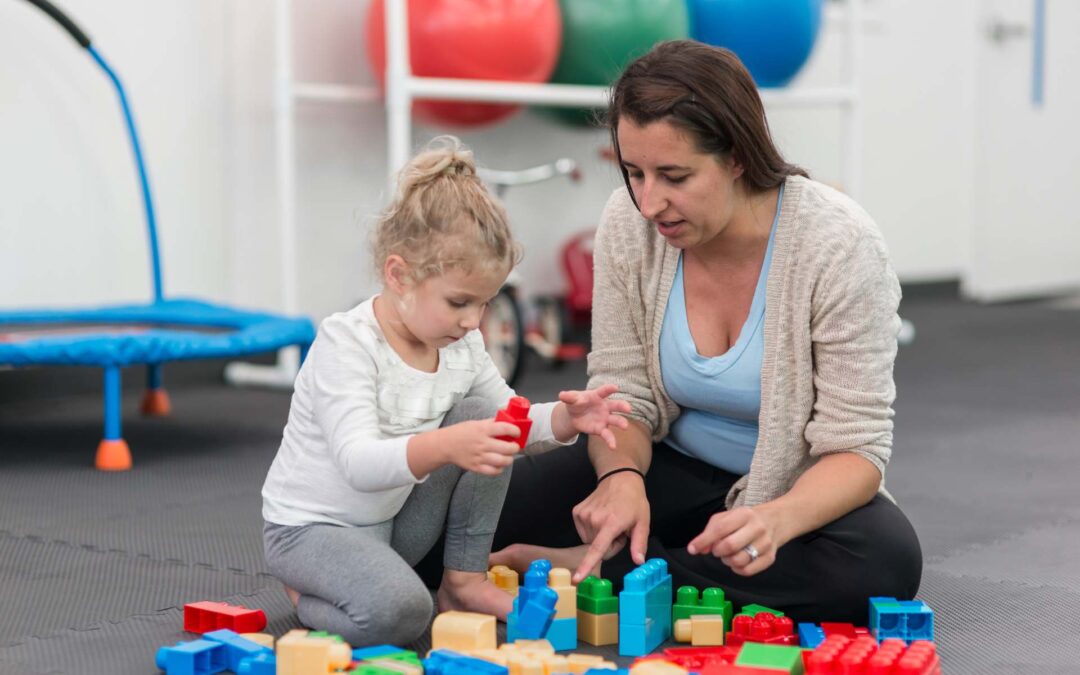Play Therapy is the equivalent of what talk therapy is for adults but for children. Decades of research shows that children communicate through play, showing that play is their language and toys are their words. Play therapy focuses on creating a safe and accepting environment for children to freely express their thoughts, feelings, and behaviors through play.
If your child is having a hard time—maybe they’re anxious, acting out, struggling in school, or going through a big life change—you might feel stuck trying to figure out how to help. That’s where Child-Centered Play Therapy (CCPT) comes in. It’s a gentle, empathetic, and effective form of play therapy developed by Virginia Axline, a psychologist who believed that children heal best through their natural language of play. Child-Centered Play Therapy is based on a simple idea: kids express themselves through play, not words. While I expect many of my adult clients to come in, sit on the couch, and have an hour-long conversation with me about what’s going on and why they’re coming to therapy, I certainly don’t expect this from a 5-year-old that comes into my office, or even a 12-year-old. Most children don’t yet have the words to explain what’s going on inside, but give them some toys, art supplies, or a sand tray, and they’ll show you what they’re feeling.
In CCPT, the child leads the way and gets to make decisions about what to do in sessions. The therapist provides a safe space filled with carefully chosen toys and materials. The child chooses what to play with and how to play. The therapist doesn’t direct or “fix” anything—they follow the child’s lead, reflect feelings, and offer support without judgment. CCPT can help with a wide range of issues—emotional outbursts, anxiety, trauma, grief, divorce, aggression, attention difficulties, and more because it’s tailored to how children naturally express themselves, it feels safe, and it’s familiar. CCPT works by supporting and encouraging the child in many different ways.
For example, it helps kids express big feelings. Your child might not say “I’m scared my parents are getting divorced,” but they might act it out using dolls or build a wall of blocks to feel safe. The therapist helps the child explore and name those feelings without forcing them to talk about the possible divorce directly if they are not ready. CCPT builds confidence. When children get the opportunity to make choices and lead their own play, they feel more in control. That sense of control can boost their self-esteem and help them feel more capable in other areas of life. CCPT helps teach emotional regulation. In the playroom, your child might “try on” different roles–hero, villain, protector, rescuer– or the therapist can model how to regulate big emotions. Through this, they learn to understand and manage their feelings in a healthy way, which can lead to fewer meltdowns or outbursts at home. It creates healing through connection. The therapist offers steady, nonjudgmental support, which helps your child feel safe, seen, and understood. Over time, this relationship can be deeply healing, especially for kids who’ve experienced trauma or loss.
While the therapy focuses on your child, families often feel the benefits just as much. As your child learns to express emotions and feel more secure, behavior tends to improve. Parents often report fewer tantrums, better communication, and a stronger connection with their child. In play therapy it is usually considered best practice for the therapist to meet with parents and caregivers consistently to share insights and progress of the client, to share CCPT methods and new parenting skills to use at home, and offer overall support. You might learn more about what your child is really feeling and how to support them in everyday life. Some therapists teach parents how to do “special playtime” at home, which is essentially using CCPT principles in mini parent-lead play therapy sessions. This strengthens your bond and gives your child even more consistent emotional support.
Child-Centered Play Therapy isn’t about quick fixes or changing who your child is. It’s about helping them feel safe, accepted, and understood so they can work through tough stuff in their own time and way. It may look like just play, but underneath, there’s powerful emotional healing happening. So if your child is struggling, or if your family is going through something big, CCPT offers a warm, age-appropriate path to healing. Sometimes, all a child needs is a safe space, a few toys, and someone who believes in them.
If you’re interested in learning more about Play Therapy & CCPT here are some resources:
https://www.a4pt.org/page/ParentsCornerHomePag
https://cpt.unt.edu/what-play-therapy
https://cpt.unt.edu/about-play-therapy/child-centered-play-therapy

